Paris is Brewing: The History of Coffee in France Since Louis XIV
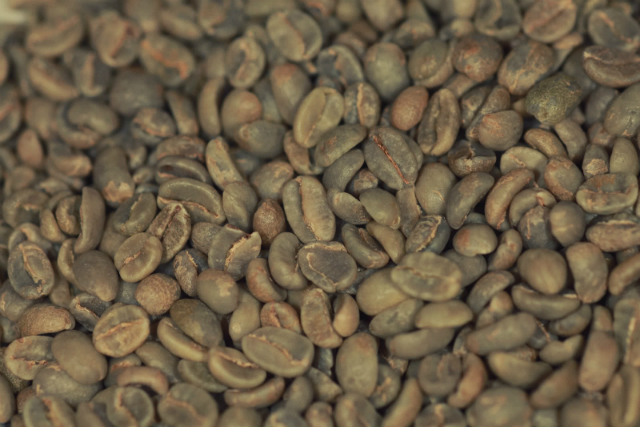
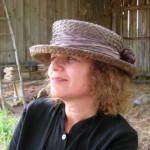
Madame Sévigné, one of the great French literary icons remembered for her extensive and opinionated letter writing said, “There are two things the French will never swallow – Racine’s poetry and coffee.” Fortunately, she was wrong about both.
Around 850 A.D., Kaldi– the legendary Ethiopian goatherd who is considered to have initiated coffee’s incredible worldwide journey– is said to have noticed his herd frolicking from one coffee shrub to another grazing on the cherry-red pods containing the beans. After trying a few himself he was soon dancing with his goats. A monk, watching Kaldi’s ensuing merriment, gathered the pods and prepared an infusion for his fellow brothers who are said to have stayed awake all night receiving divine inspiration while reciting prayers. Slowly moving north, coffee next made an appearance in Cairo and Mecca as early as 1,000 A.D. in the form of the first “power bars” — a mixture of ground coffee rolled in animal fat.
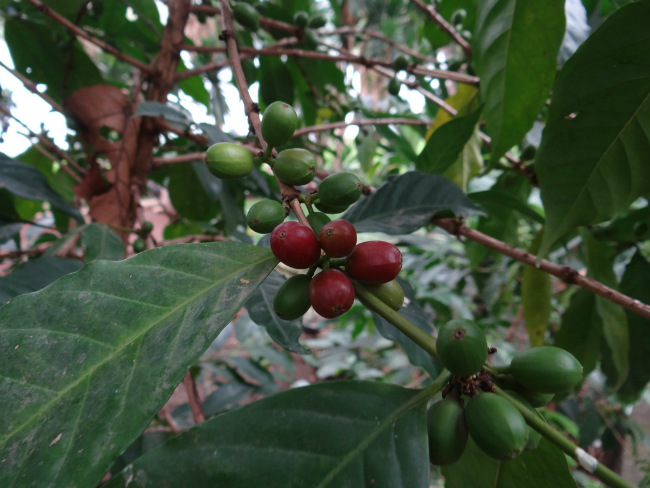
Coffee plant by msafari2425/ Flickr
The rubiaceae coffee plant, a small evergreen shrub with fragrant flowers resembling a gardenia, is native to the Kaffe region in Ethiopia. Its dark red pod, bunn, which contain 1-3 beans, is self-pollinating and takes 3-6 years to reach harvesting maturity. Caffeine, the natural alkaloid stimulant found in the bean, serves as an inborn plant pesticide, protecting the coffee fruit from insects. Coffee trees were brought from Ethiopia, across the Red Sea, to the southern part of the Arabian peninsula in the 13th century and by the beginning of the 14th century, Muslims were drinking coffee religiously. Islam’s prohibition of alcohol facilitated the proliferation of coffee. The use of the “wine of Arabia” as a holy mixture spread north with the conquest of the Arabian peninsula by the Turks in the early 16th century. The first documented coffee houses, kaveh-kanes, opened in Constantinople (Istanbul) in 1554. Coffee was a thick, unfiltered liquid, the same which is still served in Turkey, Greece and the Middle East.
By the early 17th century, coffee was introduced to Europe through Venetian merchants where it was met with strong resistance from the Catholic church. When Pope Clement VIII was asked to declare the “black, sooty beverage” the invention of Satan, he replied, “Let me taste it first.” He did and proclaimed, “This devil’s drink is so delicious we should cheat the devil by baptizing it!” After his pronouncement coffee spread through Europe like lightning. Venice’s first coffee house opened in 1645, England’s in 1650 and France’s in 1671, although coffee arrived in the port of Marseille in 1644.
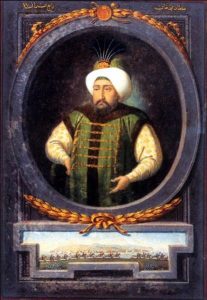
Mohammed IV, public domain
Coffee was first introduced to Paris in 1669 by Suleyman Aga, the ambassador to the court of King Louis XIV of France. Aga was sent by Mohammed IV with sacks of coffee which he described as a magical beverage when mixed with a small quantity of cloves, cardamom seeds and sugar which was then bought by the ounce at the apothecary’s shop. He also brought the apparatus used in the preparation of the Turkish style coffee drink including china dishes, and small pieces of muslin embroidered with gold, silver, and silk, which the Turks used as napkins. He became the darling of Parisian society remaining in Paris long enough firmly to establish the custom he had introduced.
Two years later, in 1671, an Armenian whom everyone called Pascal, opened a coffee-drinking booth at the fair of St.-Germain. He offered the beverage for sale from a tent, supplemented by the service of Turkish waiter boys, who peddled it among the crowds from small cups on trays. The fair was held during the first two months of spring, in a large open plot just inside the walls of Paris and near the Latin Quarter. As Pascal’s waiter boys circulated through the crowds on those chilly days the fragrant odor of freshly made coffee brought many ready sales of the steaming beverage. Soon visitors to the fair learned to look for the “little black” cupful of cheer, or petit noir, a name that still endures.This marked the beginning of Parisian coffee houses.

Courtesy of Procope
In 1686, the Café de Procope was opened by the Sicilian chef Francesco Procopio dei Coltelli, who had come to Paris from Italy acquiring a royal license to sell spices, ices, barley water and lemonade. As a keen business man he added coffee to the list and soon attracted a large and rather distinguished clientele: noted French actors, authors, dramatists and musicians. And over a hundred years later it played a pivotal role in the French Revolution (1789) where debates raged between Marat, Robespierre and the young Napoléon Bonaparte. With the opening of the Café de Procope, coffee became firmly established in Paris.
The first merchant licensed to sell coffee in Paris was François Damame, who secured the privilege through an edict of 1692. He was given the sole right for 10 years to sell coffee in all the provinces and towns of the kingdom, and in all territories under the sovereignty of the king. Every city in France soon had its coffee houses.

Jardin des Plantes/ courtesy of MNHN, Jerome Munier
Then in 1714, Louis XIV received a present from the Dutch, a coffee tree for Paris’s Royal Botanical Garden, the Jardin des Plantes. The Dutch had successfully grown the coffee tree on their colonized island of Java. Several years later a young naval officer, Gabriel Mathieu de Clieu, was in Paris on leave from Martinique, a French colony in the Caribbean. Louis XIV envisioned Martinique as a French Java. He gave a clipping to de Clieu who sailed without haste for Martinique. Pirates nearly captured the ship and a storm nearly sank it. Drought followed, water grew scarce and was rationed, but de Clieu gave half of his allotment of drinking water to his stricken cutting. Under armed guard, the cutting was planted and grew strong yielding an extended family of approximately 18 million trees in the following 50 years. The French continued to colonize the tropics in an effort to become a world leader in the coffee trade.

Cafetière in porcelain. Photo: Coyau / Wikimedia Commons
During the reign of Louis XV (1715-1774) there were 600 cafés in Paris. At the close of the 18th century there were more than 800. With the invention of the first percolation system coffee maker, “La Débelloire,” by Jean-Baptiste de Belloy, Archbishop of Paris (1802-1808) the number of cafés increased to more than 3000. In 1855 the Paris Exhibition provided a showcase for an invention by Edouard Loysel de Santais: the hydrostatic percolator. It was a machine that produced large quantities of coffee by extraction pressure. This was the real starting point that would enable Italian inventors to create “the espresso machine” a century later.
Paris is presently experiencing a positive shift in its coffee scene, having fallen behind some of the other major cities in the world like Seattle, London and Melbourne. Independent coffee houses are opening up like La Caféotheque and Coutume who are not only offering their customers a satisfying gustatory experience, but they are also roasting their beans onsite, which have been gathered from growers around the world. There are now over 40 other establishments in and around the City of Light. What goes around comes around, and Parisians have Kaldi, the Ethiopian goatherd to thank for that.

courtesy of Coutume cafe
Photo credits: Coffee plant by msafari2425/Flickr; Cafetière in porcelain by Coyau / Wikimedia Commons
Lead photo credit : courtesy of Coutume Cafe/ Robin De Lestrade

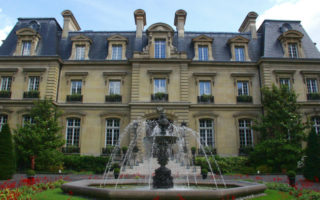

REPLY